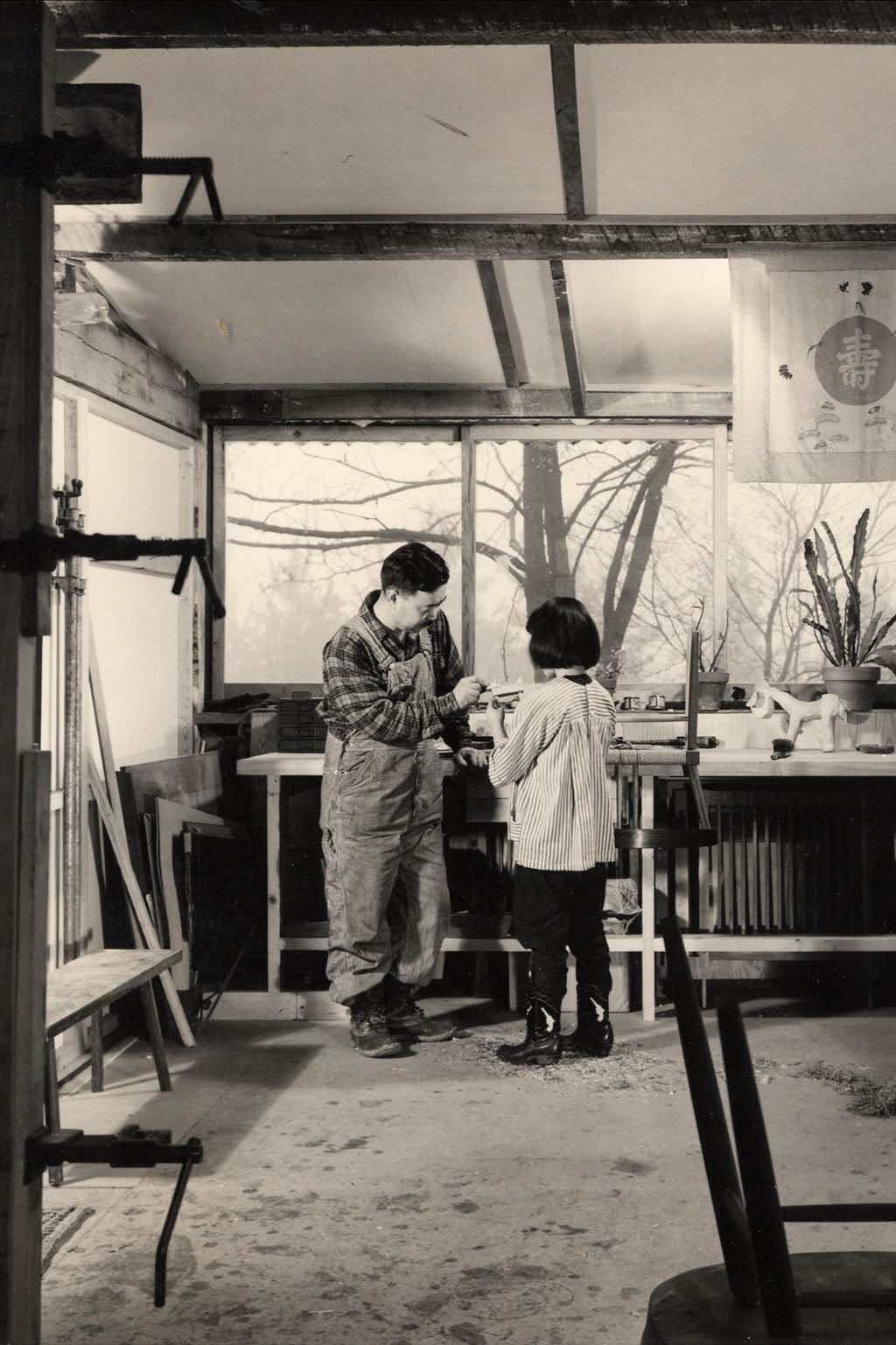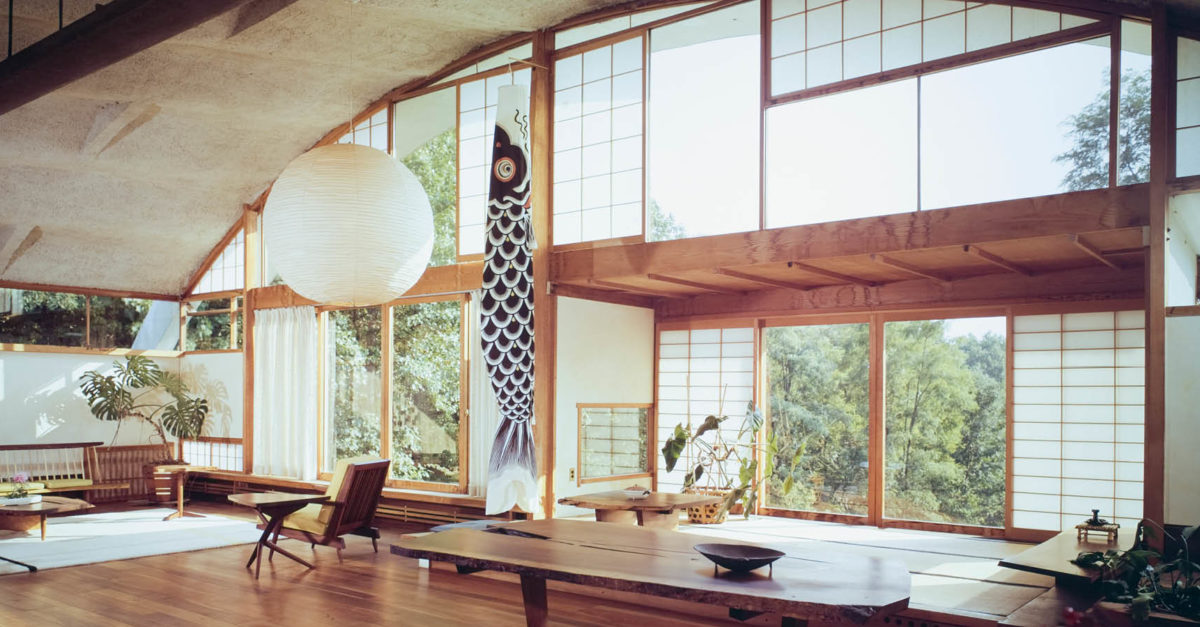Dovetailing a Legacy
Mira Nakashima, daughter of renowned woodworker and furniture builder George Nakashima, took the reins of her father’s studio after his death and has continued his legacy of impeccably designed furniture that respects the life and will of the wood.
What was your father’s education?
My father went to the University of Washington and majored in forestry for his first two years before switching to architecture; while there, he won scholarships to Harvard and to Ecoles d’Art Américaines de Fontainebleau outside of Paris. He quickly switched from Harvard to MIT, where he received his master’s in architecture in 1930.
Your father worked as an architect in India and Japan for seven years before moving back to the United States. Did he intend to be an architect in Seattle? What happened in 1942?
My parents were married in Los Angeles in 1941 and then moved to Seattle, where my father decided he would rather make furniture than be an architect. In 1942, shortly after I was born, all the Japanese nationals and ‘nonaliens’ within 150 miles of the Pacific coast were rounded up and sent to internment camps out of fear that they would collaborate with the Japanese across the Pacific Ocean. My father’s experience as an Eagle Scout helped him cope in Camp Minidoka in Idaho. He worked side by side with a Japanese carpenter to make our barracks more livable and comfortable. They used the materials at hand and improvised with hand tools as best they could, which turned out to be a very important learning experience in my father’s life.

Why did your father move the family to New Hope, Pennsylvania? How was he able to use his skills?
My father’s former employer in Tokyo, well-known architect Antonin Raymond, had left Japan in 1939 and was living in a farmhouse in Bucks County in Pennsylvania. Antonin and his wife, Noémi, petitioned to have my father come and tend the chickens on their farm, so we were allowed to leave the camp in 1943, two years before the war ended. On the farm, my father made furniture out of found materials, along with one coffee table made of his precious planks of East Indian teak he had brought from Seattle.
Do you still live on the land where your father first built a house?
I live across the road from the land where my father first built his house. In the beginning, he bartered three acres of land for labor on the owner’s farm, purchased two more small parcels, and then had the opportunity to purchase twenty-five acres across the road. As an incentive to bring me home from Pittsburgh, where I was raising my growing family, he offered me two and a half acres of that new parcel of land, a house, and a part-time job in 1970, and I couldn’t pass up the offer. The workshop on the original property was built in 1945, and in subsequent years my father constructed many other buildings, including his house, an Arts Building, and the Conoid Studio.
How did your father’s work initially get noticed?
It was a hard go in the beginning. Dad developed a relationship with Rabun Studios in New York, where he occasionally sold a few pieces, but it was not until he joined a group of designers at Knoll Studios in 1945 that he began to be recognized as a prominent furniture designer. This recognition gave him the freedom to make furniture on his own terms in his own shop and to earn a decent living.
What are some hallmarks of the Nakashima line? Will you talk about one or two of your favorite pieces?
My father always said that he would not be interested in making furniture out of any material other than solid wood. He believed in honest joinery and a minimum of metal fasteners, never used plywood, except where it was not seen, and had such an uncannily keen sense of proportion that some people say he could see the error of one millimeter from across the room and would immediately correct it. He happily went with the flow of postwar interest in Japanese design and the concepts of wabi, sabi, and shibui, which were embodied in his work. One of my favorite pieces is the Persian walnut coffee table in our living room that my father made. It has a large hole in the middle, which my youngest son used to climb into and pretend he was driving. My youngest grandson came to visit and did the exact same thing! My other favorite is the Conoid chair, once criticized for being structurally unsound but since proved otherwise by being in constant production since 1960. It is always graceful, always comfortable, and always beautiful in its simplicity.
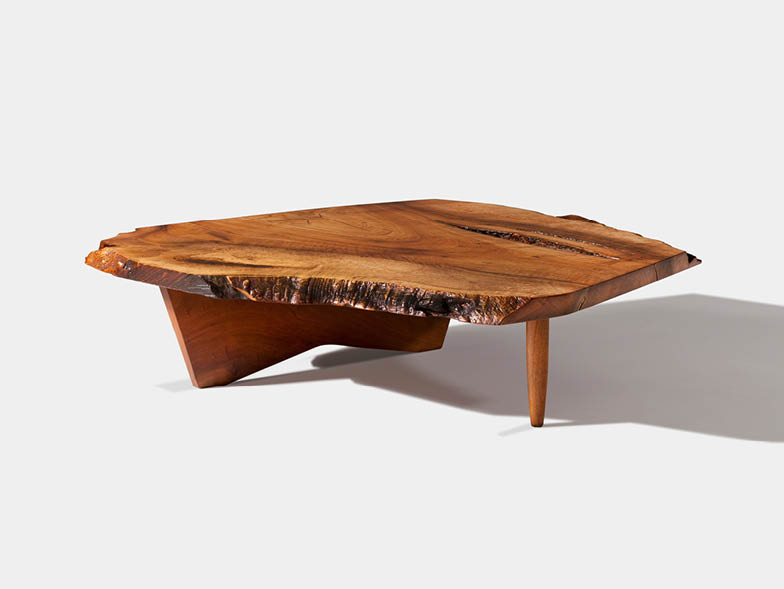
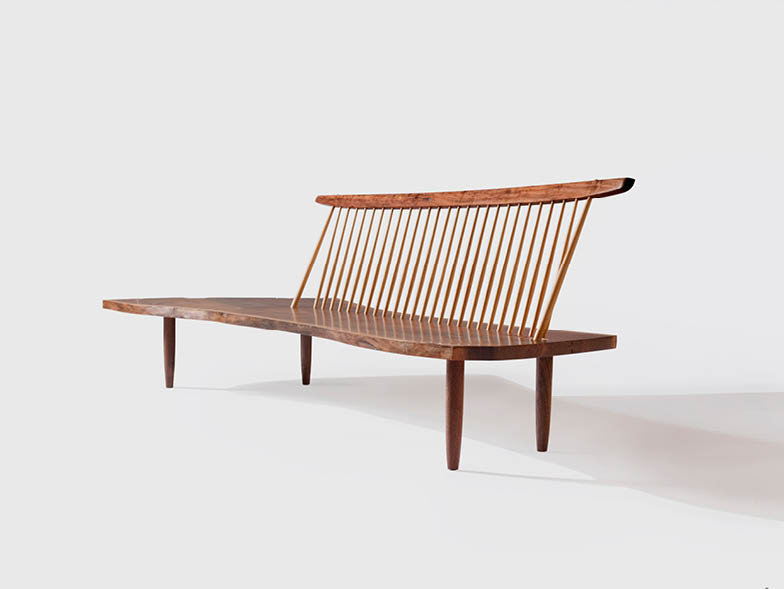
Why was it important to your father to leave the imperfections in the wood? Do you think it was a metaphor for other parts of his life? Or do you see it as more of a contradiction to his perfectionism?
I believe that it was perhaps a metaphor for our lives—living with imperfection and making the most of it, adding butterflies here and there not only as mending devices but also as “beauty marks,” and improvising with what life throws in our path. We strive to make something beautiful by respecting the wood and the life it has lived, not just cutting it apart and gluing it back together to make a man-made shape. It is also a lesson in humility and sublimation of ego to allow the wood itself to tell you what it wants to be.
Did you want to follow in your father’s footsteps or forge your own path?
I had no intention of following in my father’s footsteps and no intention of ever coming home after college. However, my father convinced me to major in architectural sciences at Harvard instead of linguistics or music and then arranged for me to attend graduate school at Waseda University in Japan to earn an advanced degree in architecture. The university worked on the atelier system, so as students we worked on real projects with real architects as our instructors, which provided invaluable and unforgettable lessons. While I was a student in Japan, I taught English on the side, did some translation work, and brought my first baby to graduation.
What was it like being an apprentice for your father?
It was tough being an apprentice to my father. He never explained why or how he did what he did, except when I would accompany him to the sawmill. He did not tolerate having his authority questioned or challenged and fired me many times. I eventually learned to do as I was told most of the time, until he had his stroke shortly before his death in 1990, when I had to take over and do what I thought he would have done. His mantra was to forget your ego, which was a hard lesson to learn.
How would you describe your work ethic?
My work ethic is a bit obsessive, as I never seem to be able to finish what needs to be done in the time available during work hours. One of our former secretaries marveled that my parents’ jobs were not only all-consuming but also served as their entertainment, social life, happiness, and self-fulfillment. I used to think they were a bit crazy, but my own life has become the same way. There is little time for anything else, other than a bit of music here and there.
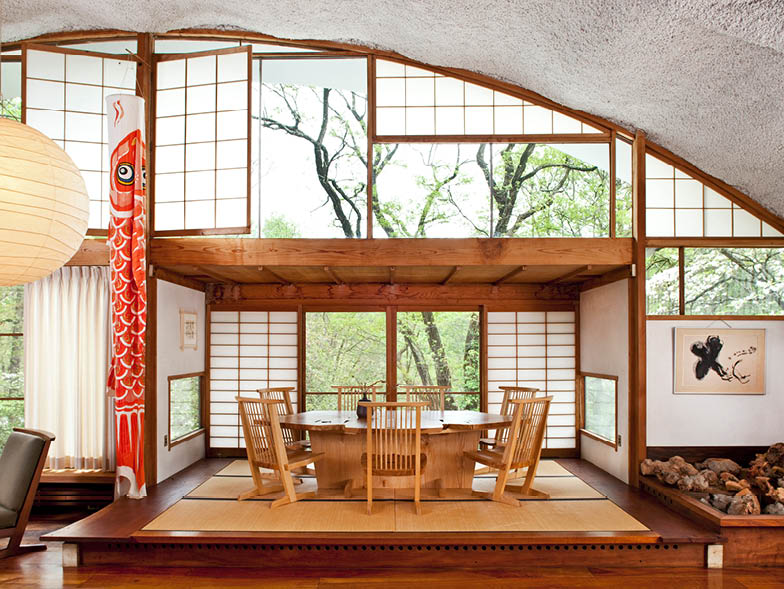
As you carry on your father’s legacy, are you carving your own path as well? Did you ever feel you were in his shadow?
My friend Erica Stoller, who inherited her father Ezra’s legacy of fine photography, complained that she, too, is always in her father’s shadow. I told her that I was quite comfortable being in my father’s shadow as the backdrop to my life, and it was a lot better than being nowhere. Every now and then, I am inspired to do something that my father had not done but still ask myself, “What would George do?”
What is some life wisdom your father passed on? What qualities do you feel he passed on to you that have served you well?
I’ll never forget my father’s advice: “Keep your nose clean, and create a little beauty around you.” My father also said, “The best you can do is the best you can do,” which is always comforting as well as inspiring. Humility and steadfastness in the face of adversity, as well as lack of ego, are still ongoing lessons, often taught and learned the hard way.
What do you find most fulfilling about your career?
There is always something that needs to be done. Waking up each morning and going through the shop, checking on each project, visiting briefly with each of our employees, looking for wood, creating drawings, talking with clients, watching over architectural restoration—it is always interesting and challenging. I love seeing a piece of furniture emerge from the hands of one of our craftspeople, to watch its fuller beauty develop as it goes through the finishing process, and then to sign it and kiss it goodbye.
For more info, visit nakashimawoodworkers.com
